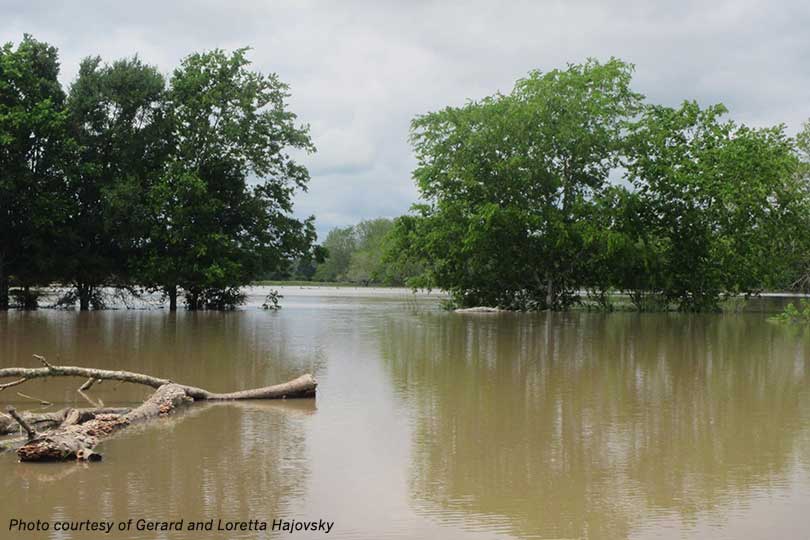By Jessica Domel
News Editor
Mother Nature is taking its toll on the Lone Star State. Just weeks after parts of East Texas and Louisiana flooded due to too much rainfall, the same has happened to farmers and families across much of North, Central and Southeast Texas.
Some lost their homes, vehicles and businesses. Others lost their lives.
In Houston, major thoroughfares remain closed as they look more like rivers than roadways.
In Central Texas, fields of growing cotton, corn and wheat are being checked with small boats and rain boots instead of four-wheelers and trucks.
Fayette County farmer Gerard Hajovsky received more than a foot of rain Monday. He lives “down river” from the Colorado River south of La Grange and ended up using a boat to check his land and pecan orchard this week.
“We’ve got a lot of corn underwater. It goes anywhere from a couple of inches to several feet. It’s slowly draining off, but the river’s not going down fast enough. It needs to get off the corn crop pretty quick here,” Hajovsky said in an interview on the Texas Farm Bureau (TFB) Radio Network.
This isn’t the first time Hajovsky’s farm near La Grange has flooded.
In fact, last May, Hajovsky and his family battled another flood in their pecan orchard and fields.
“We’ve seen this several times already in the last 20 years. You’ve got to take it as it comes,” Hajovsky said.
The effect the water will have on his pecan trees is yet to be seen.
“They were just starting to pollinate. The rain might have hampered some of the pollination, but that’s our biggest problem right now,” Hajovsky said.
As rivers continue to swell and leave their bounds, rain remains in the forecast.
“As the water recedes off the corn, the silt that’s left on it, we could use a little rain to wash it off and maybe that will help it grow and get started again,” Hajovsky said.
Hajovsky was fortunate and did not lose any cattle in the flooding. Others weren’t so lucky.
Ellis County farmer Lee Calvert lost five cows and two calves in a lightning storm early Sunday morning.
“There was a lot of lightning before and after the rain,” Calvert said. “I had a vet come out to check if it was something else. They were all facing the same direction. Their babies were right beside them, which tells me they were on the side the rain wasn’t coming down. They all had their rear ends the same direction. They were all standing there and lightning struck. It could have been a ground to cloud lightning, which is actually worse for livestock.”
Calvert had heard of lightning striking cattle in other places, but had never seen it.
“I wouldn’t wish this on anyone,” he said.
This loss, paired with the flooding his area also endured in May, has made things difficult for farmers in the area.
Calvert received more than six inches of rain over the past few days. Wheat in some areas is lying down, but could still stand back up if things dry out.
Calvert may not be so lucky with his sunflowers.
“Think about the plant breeding the opposite of the way we do. We breathe in from the top and carbon dioxide is our waste. Theirs is the opposite. They need oxygen below the ground. When water fills an empty space, there is no oxygen available to the root. You choke off oxygen supply,” Calvert said.
Without access to oxygen, sunflowers will turn yellow and die like they did last May.
“In the Hill Country, you get more roll to the hills and more terraces, so the water drains. Right up here, we’re on the edge where the plains start. When it is flat, there’s no room for the water to go. It can’t evacuate fast enough,” Calvert said.
Corn, too, could die if things don’t dry out soon.
“Just stressing the plant out during this week is bad because this time is critical for growth,” Calvert said. “If the plant was a foot taller, it would be better. The timing is off.”
Timing is everything when it comes to crops.
“I’d rather have less rain at a good time than more rain at a bad time,” Calvert said.
Gov. Greg Abbott has declared a state of emergency in nine counties due to the deadly flooding.

